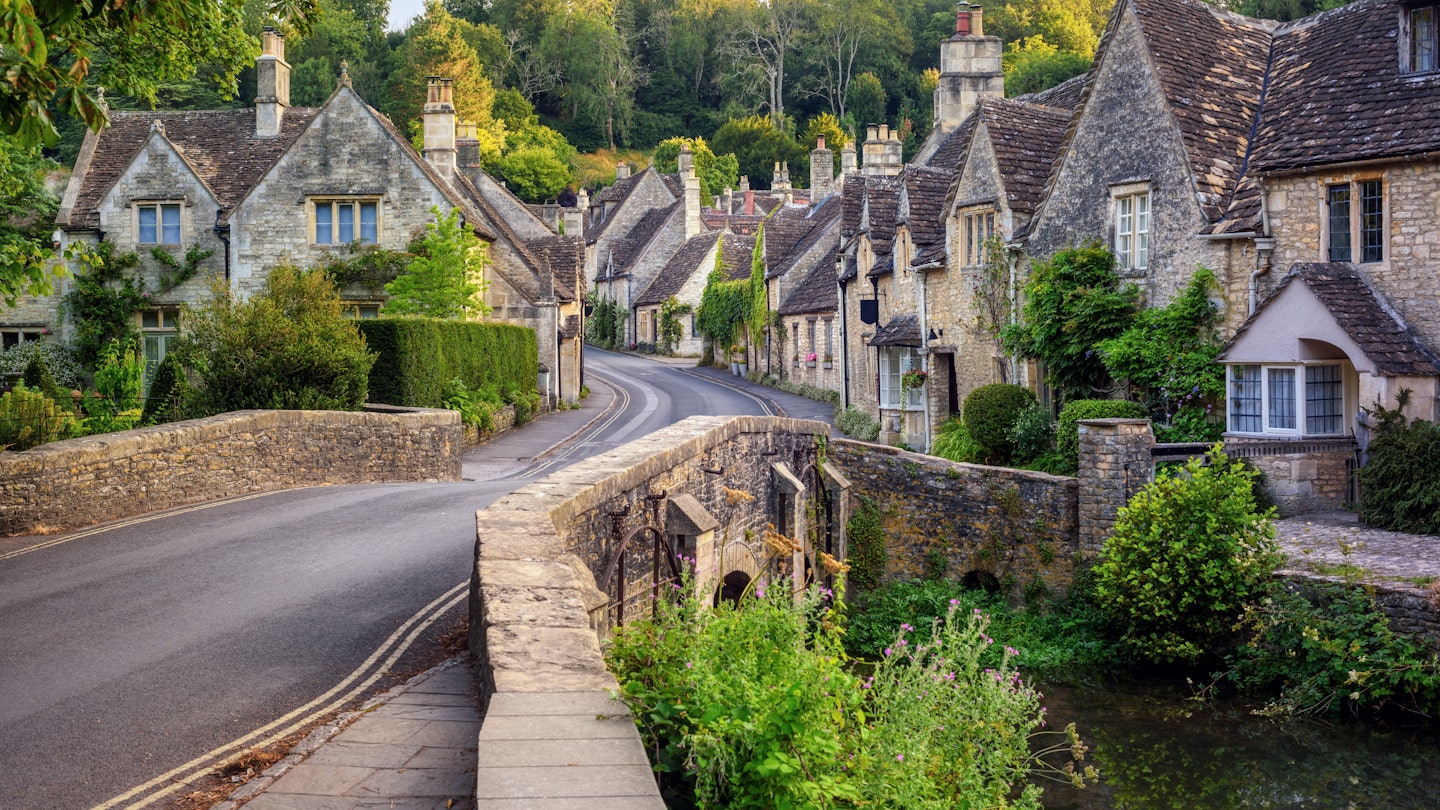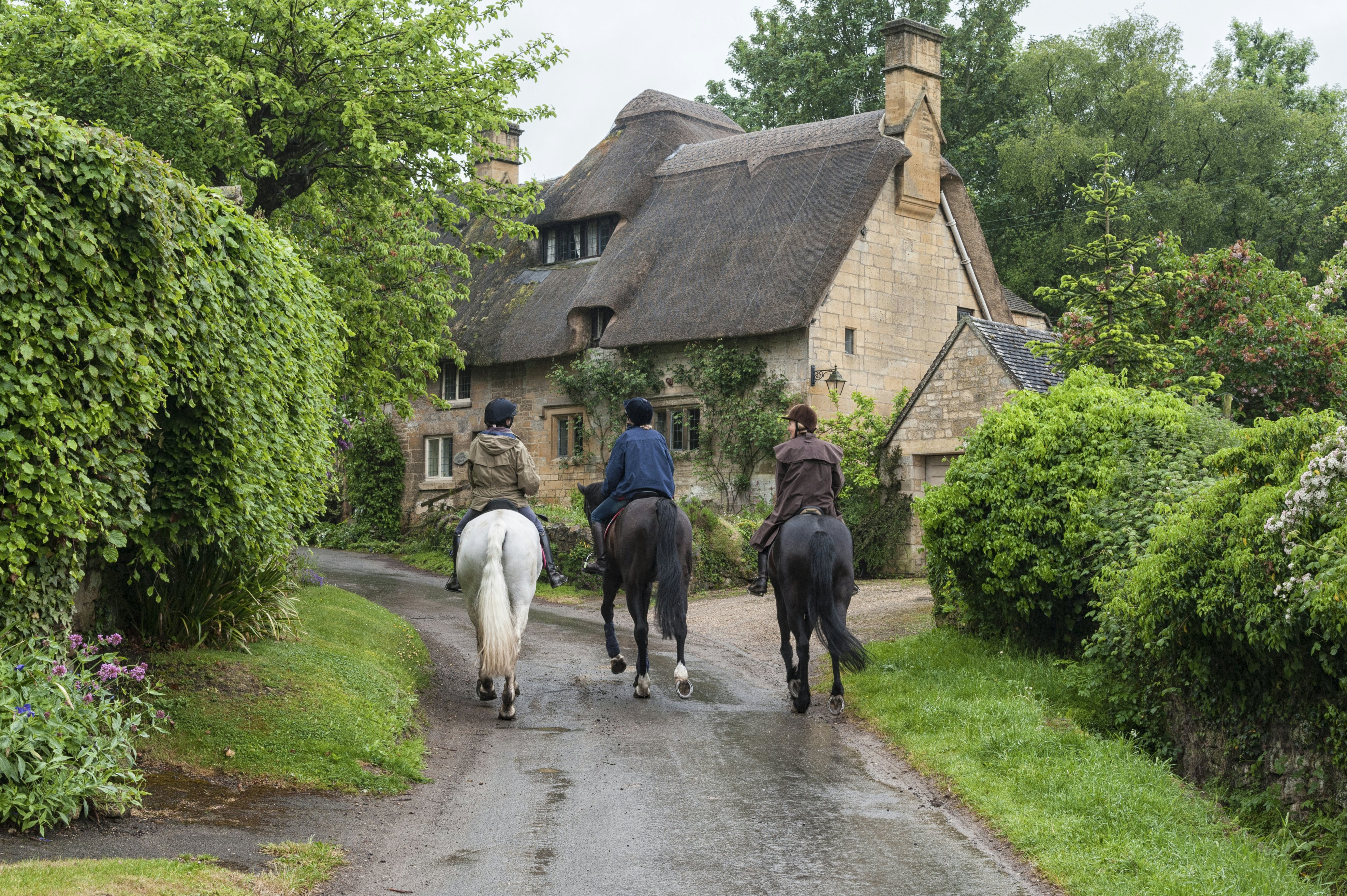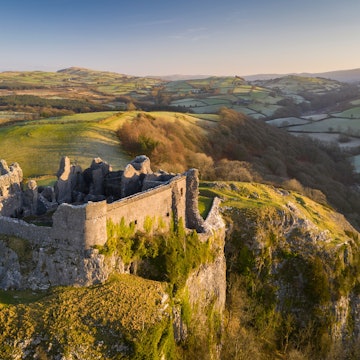
The 12 best things to do in Cirencester and the Cotswolds, England



Explore the Cotswolds, a region filled with natural beauty, quaint villages and quintessentially English charm. Boris Stroujko / Shutterstock
Say “English countryside” to anyone outside the UK and something like the Cotswolds will probably come to mind, with good reason. This special part of England is also the vacation spot (and/or second home location) for many a celebrity from around the globe.
Stretching from Stratford-upon-Avon in the north to Bath in the south via Cirencester, the Cotswolds is made up of landscapes you'd see in Romantic paintings, quaint villages built in honey-colored stone, cozy pubs, fields framed by hedgerows, and independent shops selling local produce (expect to be learning more about English cheese).
Add in picturesque gardens and pretty canals, and it’s no wonder the Cotswolds is designated an Area of Outstanding Natural Beauty (AONB) in England.
Here are some of the best things to do in and around Cirencester and the Cotswolds.

1. Photograph historic villages like Stow-on-the-Wold and Bibury
There are many villages in the Cotswolds that encapsulate the region’s beauty and charm. Once a bustling center of the wool trade, Stow-on-the-Wold is particularly popular, a treasure trove of antique shops, galleries and independent retailers.
When you’re done perusing them, hunt the mystical door at St Edwards Church. This portal is nestled between two ancient yew trees, with a lantern hanging above: many say it was the inspiration for Tolkien’s “Doors of Durin” in the Lord of the Rings trilogy.
For the pinnacle of Cotswolds cottages, head to the village of Bibury’s Arlington Row. The rustic two-story limestone buildings here were built in the 14th century, and it's a very popular spot for snapping a photograph. Do get your shots from a respectful distance, as the quaint buildings are privately owned homes.
Detour: Hungering for more lovely backdrops? Bourton-on-the-Water sits on the River Windrush on the way to Bibury from Stow-on-the-Wold, and it offers ample opportunities for waterside selfies.
2. Wander the organic gardens of Kings Charles's favorite place, Highgrove
The primary residence of King Charles III from the 1980s until his ascension to the throne in 2022, Highgrove Estate is close to the king's heart.
Built between 1796 and 1798, in a Georgian neoclassical style, the house itself is not open to the public, instead you can visit its exquisite, organic gardens, which include rows of shape-clipped yews and a "carpet garden" modelled on an oriental rug.
Two-hour garden tours (around £35 per person) run on select days year-round. Tickets usually sell out in advance, but last-minute tickets are sometimes available.
Planning tip: If you miss out on visiting, you can pick up some gorgeous Highgrove souvenirs at the gift shop in Tetbury (a mile away).
3. See Roman ruins in Cirencester
This temperate corner of Roman "Britannia" inevitably enticed heavy settlement, as abundant remains prove. Cirencester (Corinium Dobunnorum) was the province’s second-largest walled city by the 2nd century CE. Its well-planned streets included a forum, a basilica and an amphitheatre. Built to hold around 8000, the contours of the now-overgrown amphitheatre can still be seen today. And it's free to roam around.
To best appreciate the city’s Roman heyday visit the Corinium Museum, where locally excavated mosaics highlight a well-curated collection.
Detour: The remains of numerous Roman villas have been uncovered in the surrounding countryside. Two of the finest lie just outside Cirencester: at Chedworth, you’ll see three buildings, mosaics, a bathhouse and a heating system, while Great Witcombe retains a bathhouse, a shrine and mosaic floors (although it is currently closed to visitors). Closer to Oxford, the two remaining buildings at North Leigh also include a fine mosaic.

4. See the real Downtown Abbey at Highclere Castle
One legacy of England’s plundering past is a countryside dotted with magnificent, centuries-old manors. These prestigious properties, with their inspiring architecture and artisanship, are now lovingly maintained by heritage preservation societies – or private owners – at considerable contemporary expense.
Highclere Castle is a grand estate, landscaped by Lancelot ‘Capability’ Brown, is worth a wonder to investigate its 18th-century follies. It's also on the bucket list of every Downton Abbey fan – with rooms decked out with images from the show.
You haven't watched Downton? Never fear, you might be more interested in the Egyptian Exhibition, which narrates the search for and discovery of the Tomb of Tutankhamun in 1922 by former owner, George Herbert, the 5th Earl of Carnarvon, with Howard Carter and Evelyn, Lord Carnarvon’s daughter.
Local tip: If neither piques your interest, this is a castle that’s still very much a private home. Family photos of the Earl and Countess of Carnarvon, bedside novels, and owners own blog all give you an insight into English aristocratic life in the 21st century.
5. Go wildlife spotting in the Cotswolds
In the mosaic landscape of the Cotswolds, centuries-old farms intersperse with pockets of woodland and wildflower meadows, and wildlife roams the corridors of grasslands, hedgerows and wetlands. Keep your eyes (and ears) open for chance encounters everywhere.
Birds like robins, wrens and skylarks are common in the farmlands and urban gardens in the Cotswolds, while barn owls can be spotted near Stow-on-the-Wold and in the Severn Valley at dawn or dusk. Once close to extinction, buzzards and red kites have made a comeback after a successful breeding program in the Chiltern Hills. And the restoration of limestone grasslands has revived populations of Adonis blue and fritillary butterflies.
In woodland areas, listen out for the song of willow warblers and chiffchaffs. You might spot foxes, badgers, bats or deer – although you’re more likely to see these elegant white-spotted beauties on a Cotswolds estate than skipping across your path in the wild.
Water meadows and rivers are home to the elusive otter, plus water voles, dragonflies and colorful kingfishers, as well as brown trout and freshwater crayfish. Hedgerows support thousands of insects, mice, shrews and other small mammals – which is also why you’ll see birds of prey hovering overhead.

6. Marvel at the rich history of Blenheim Palace
The only non-royal country house in England with the title of "palace", Blenheim Palace is one of the UK's UNESCO World Heritage-listed sites. Built between 1705 and 1722, it was designed by Sir John Vanbrugh and Nicholas Hawksmoor in a rare example of flamboyant English baroque style. Its majestic, 809-hectare (2000 acre) parklands and pleasure gardens were also laid out by celebrity landscape architect Lancelot ‘Capability’ Brown.
The home of the Duke and Duchess of Marlborough, it is also where one of Britain's most-lauded prime ministers, Sir Winston Churchill, was born. A must-see while you're here is the Churchill Exhibition, dedicated to his life, work, paintings and writings.
Additional tour options include the Upstairs Tour, illuminating the life of palace residents and guests, and the Downstairs Tour, revealing palace staff experiences past and present.
Planning tip: Look online for special events like the Christmas lights trail, as well as ones that may potentially detract from your visit, such as the Blenheim Palace Triathlon.
7. Walk the paths of Westonbirt, the National Arboretum
Strollers delight in Westonbirt Arboretum, a magical estate with over 15,000 specimens, including 2500 different tree species and five national tree collections. Look out for the Gruffalo and other characters from the children’s book scattered throughout the grounds.
This 19th-century garden occupies some 600 acres adjacent to Prince Charles’ Highgrove Estate (the princely manor is, alas, obscured by trees). Westonbirt Arboretum has two parts: the Old Arboretum is a meticulous composition of avenues lined by exotic trees, while Silk Wood remains mostly traditional woodland. If the winding trails through all the trees and shrubbery don’t give you enough of a thrill, try the 300m (984ft) treetop walkway instead.
Planning tip: The grounds are open for tours and afternoon teas from April to October: combine the two for a wonderfully full day.

8. Head out on horseback
Horse riding is popular in this picturesque part of England. Numerous operators can saddle you up, including the Bourton Vale Equestrian Centre (rides from £40), which has options for beginners through to experienced riders, including 30-minute to one-hour rides around Upper and Lower Slaughter.
For longer rides, Jill Carenza Equestrian, near Stanton, has over 50 horses and ponies for children, hacks (trail rides) for all skill levels along miles and paths and bridleways.
The region's history of horses is long: Britain's oldest horse (in chalk form), the Uffington White Horse – 110m (360ft) long and 40m (131ft) high – was carved into the hillside around 3000 years ago during the Bronze Age. It's a half-mile (0.8km) walk east through the fields from the hillside car park.
9. Enjoy tea at a traditional tearoom
Care for a cuppa? The Cotswolds is the perfect place to find a traditional English tearoom. Slow down and sit down for a classic combination of scones, jam and heart-warming teas.
The picturesque 17th-century Tisanes Tea Room in Broadway is the ideal setting to enjoy a traditional menu of sandwiches and over 30 varieties of tea. Scones, clotted cream and homemade jam are on the menu at Lady Grey Tea Room just off the Ridgeway Trail. Another popular teahouse, Wallingford Tearoom does cream teas, cakes, light dishes and afternoon tea on the 1st floor of the Wallingford Antiques Arcade. And Sally Lunn’s Historic Eating House, in Bath’s oldest house (c. 1483), is famous for the Sally Lunn Bun, a large golden bun similar to French brioche.

10. Get edible Cotswolds souvenirs at these farm shops
Chain stores are relatively rare in Cotswolds villages. You’re more likely to run into a boutique shop than a Sainsbury's. Home to sustainable, locally sourced cooking, the Cotswolds is also a popular foodie destination, whether you’re roaming Stroud’s Saturday-morning farmers' market, spending the afternoon at a country pub or tucking into a tasting menu at a Michelin-starred restaurant.
Located between Stow-on-the-Wold and Chipping Norton, the green-starred Daylesford Organic is the most well-known farm shop and cafe in the Cotswolds, first opening in 2002. An onsite cooking school and craft workshop, means you could spend the whole day on the farm.
With a menu of over 50 varieties, the Cotswold Cheese Company is well worth a visit. Three Cotswolds locations (Burford, Moreton-in-Marsh and Stow-on-the-Wold) ensure there’s ample opportunity to fit a stop to taste and buy some cheeses into your itinerary.
Wherever you dine, you’ll spot menus name-dropping Cotswolds micro-producers, from dairies to orchards to honey producers, artisan bakeries, game dealers and butchers. Among those producers you can visit is the fragrant Cotswold Lavender. Growing 35 varieties over 28 acres on its farm just outside Broadway, you can visit the fields, distillery and farm shop in the summer months.
In Frampton Mansell, Jolly Nice represents over 70 small producers with plans to extend. And just outside Burford, Upton Smokery specialises in smoked fish and meats and sells local produce in an ex-firehouse.
11. Start your engine at the Cotswold Motoring Museum
Their engines may not purr anymore, but the cars of the Cotswold Motoring Museum gleam with vintage glory. Visit for a fascinating look at motoring history through an irresistible collection of vehicles, toys and memorabilia.
The collection is housed in a converted 17th-century water mill, and features several showrooms. Check out the “Windrush Alley” exhibit, a chance to see how boneshakers and penny-farthing bikes once shared the roads with horse-drawn carriages and cars in the late 19th century, a transitional era of transport.
At “Jack Lake’s Garage,” you can interact with an interpreter playing a working mechanic and garage proprietor from the Cotswolds in the early 1900s. Learn how the car industry grew from nothing to over 20 million cars on the road in his lifetime, and how this affected him.

12. Ramble through rolling countryside
Laced with long-distance paths, the Cotswolds is glorious walking country. The 102-mile (164km) Cotswold Way is the most famous trail, passing through forests, wildflower-filled meadows and villages. It takes seven to 10 days to complete in its entirety but you can take shorter day-walk segments.
A great taster is the section from Wood Stanway to Winchcombe (5.4 miles/8.7km), with views from the escarpment to the Malvern Hills and taking in the Iron Age hillfort of Beckbury Camp.
For nature lovers, the section from Dowdeswell to Leckhampton Hill (4.7 miles/7.5km) passes through the ancient forest Lineover Wood, 50 hectares of woodland with silver birch, dogwood, blackthorn and beech trees, and home to wildlife such as fallow, roe and muntjack deer, laughing green and great spotted woodpeckers, treecreepers, red kites and ospreys. The path descends close to Seven Springs, believed to be the source of the Thames, before ascending back to the escarpment with views across Cheltenham and the Severn Vale.
Other Cotswolds walks include the Thames Path, from Cirencester to London (185 miles/299km); the Wardens Way, from Winchcombe to Bourton-on-the-Water (14 miles/22km); and the Bibury and Coln St Aldwyns Way (6.7 miles/10.8km), a circular route linking two of the Cotswolds' prettiest villages, passing hedgerows and the River Coln.















